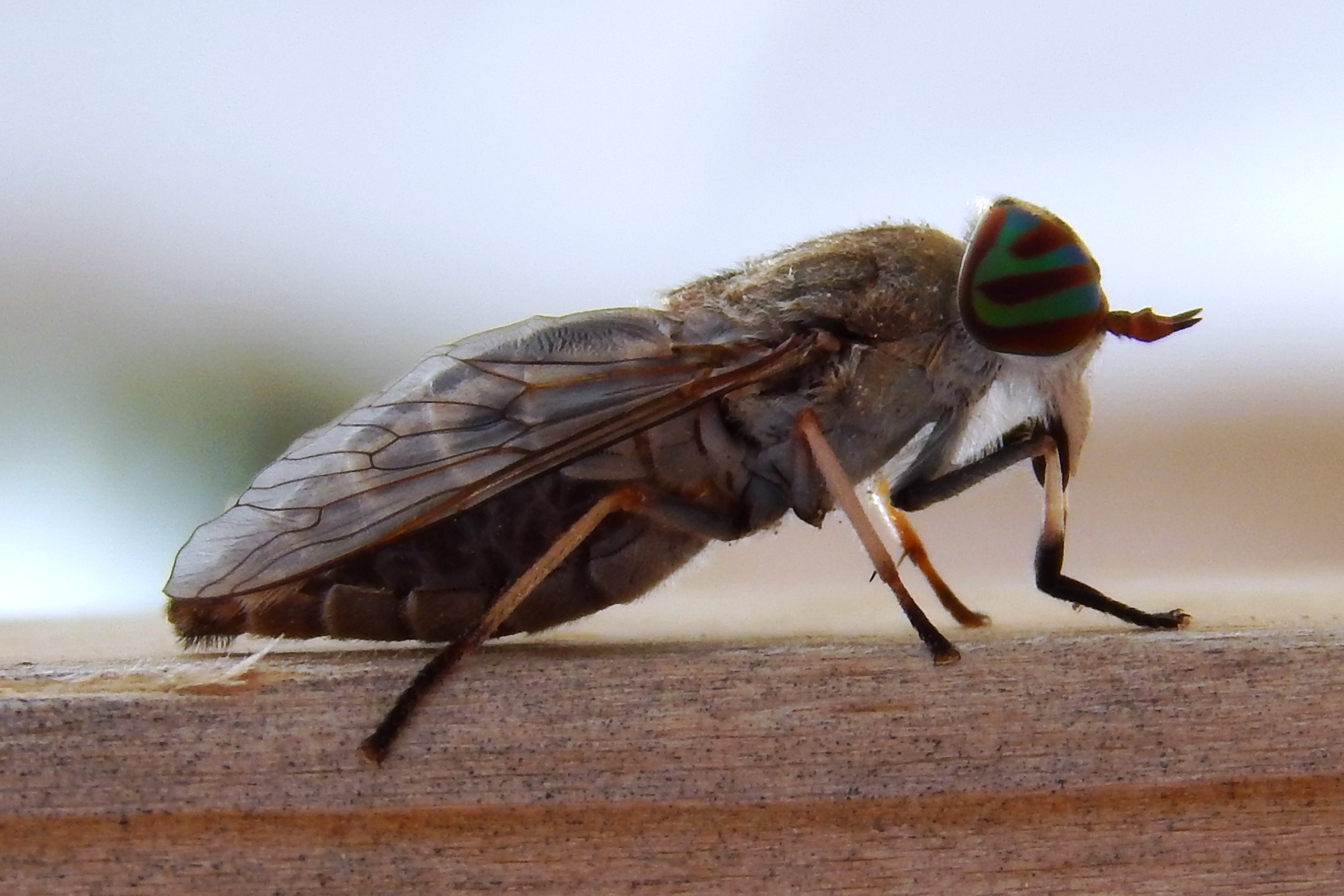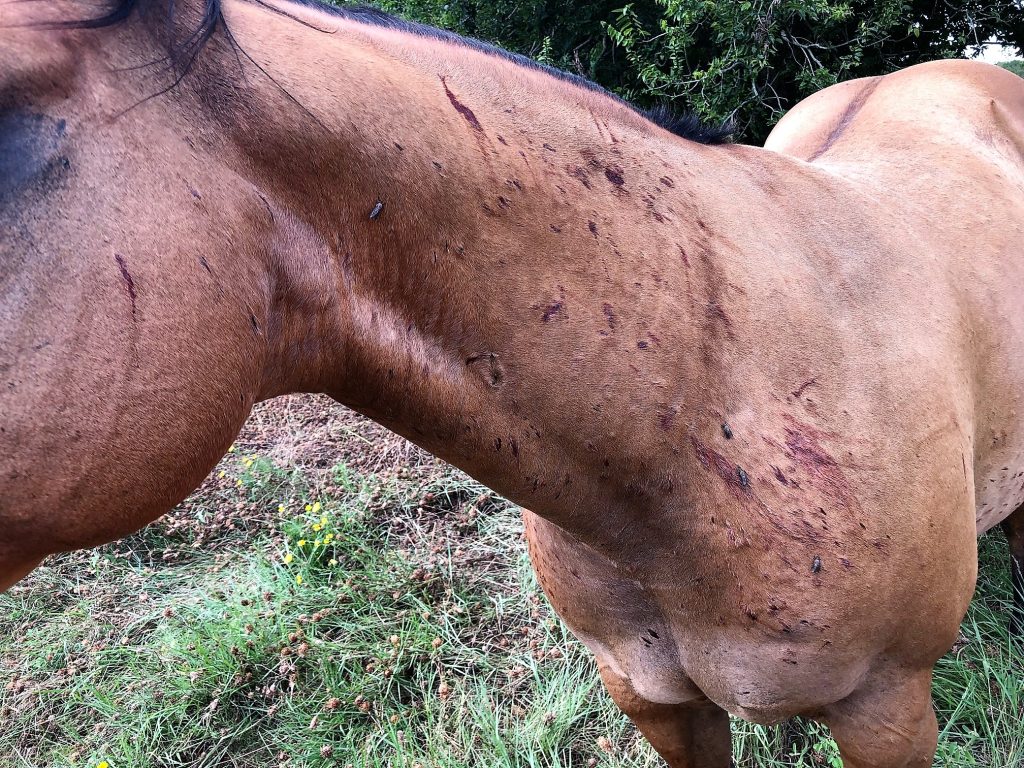Livestock, humans at risk of painful bites as horse fly populations increase

Rainfall fueling above-normal infestations of these relentless pests
Be on the lookout for an especially nasty and tenacious biting insect pest – the horse fly – as it hunts for its next blood meal.
Sonja Swiger, Ph.D., Texas A&M AgriLife Extension Service entomologist in the Texas A&M Department of Entomology, Stephenville, said she expects reports of horse fly infestations to increase over the coming weeks.
Despite the name, horse flies are not host-specific to horses. They will feed opportunistically on available human and animal hosts.
“Like mosquitoes, only female horse flies bite because they need the host’s blood for egg production,” Swiger said. “Horse flies only bite and feed once every few days, but their need for blood meals makes them relentless biters.”
What makes horse fly bites especially savage, Swiger said, is they cut their host’s skin with knife-like mouthparts and then consume the blood that pools around the wound.
Horse fly season is upon us
Swiger said consistent rainfall over recent months and the widespread deluge from Tropical Storm Beryl could mean higher-than-normal horse fly populations in Texas this summer. This could spell problems for Texas livestock owners because this persistent biting fly is difficult to control.
Horse flies are larger than common flies, such as stable or horn flies, growing up to an inch long. Some are all black while many have colored patterns on their abdomen and wings. They also have very colorful eyes that vary with species.
“I would expect higher numbers than the past two years because of the rain,” Swiger said. “Their larvae need mud to develop, so I would expect an emergence. I also suspect some locations in East Texas are already getting eaten up by them.”
Where horse flies develop, hunt
Swiger said the relentless pests typically stay in shaded areas such as along tree lines. They consume carbohydrates in the form of nectars and honeydew, but females will range away from cover to hunt hosts for blood meals.

Female horse flies typically lay eggs over winter and in early spring in shady, semi-aquatic to moist areas, including around the edges of ponds or water tanks, she said.
“They can be in any number of locations, and that makes them hard to treat effectively,” she said. “The larvae are maggots, but they look like maggots on steroids. Maggots are also very predatory and eat each other, so there will only be one larva in a 10–20-foot radius.”
Horse flies have a maximum range similar to most flies – five to 10 miles – though most fly populations remain relatively close to the breeding ground where they emerged, she said.
How to reduce horse fly impacts on animals
Controlling horse flies is difficult, Swiger said. There is no available data focused on the effectiveness of pour-ons designed to curtail the pest.
Pyrethroids, especially synthetic pyrethroid-based pour-ons, have been shown to provide temporary relief, but most synthetic pyrethroid products are not labeled for use on horses.
“There’s just not much labeled for horses, and even on cattle, those chemicals don’t do much to deter horse flies,” she said. “Permethrins may work, but again, it’s going to be limited relief.”
Swiger said the best defense for livestock is to move them from the infested area into a barn or to cover them with lightweight summer sheets designed to stop biting flies and mosquitoes, she said.
Traps specifically designed for horse flies can reduce numbers in infested areas, she said.
“They are visual hunters so many traps have a black ball, which mimics the belly of an animal,” she said. “We trapped 350 horse flies and 200 deer flies over 10 weeks in two counties for a study. So, they do work. We just don’t have enough data yet to say how effective they are.”
PHOTO: Female horse flies can be stubborn, aggressive blood feeders. Reports of the pest have not been high so far, but they are expected to increase in areas that received heavy rains over recent weeks. (Bart Drees/Texas A&M AgriLife)



